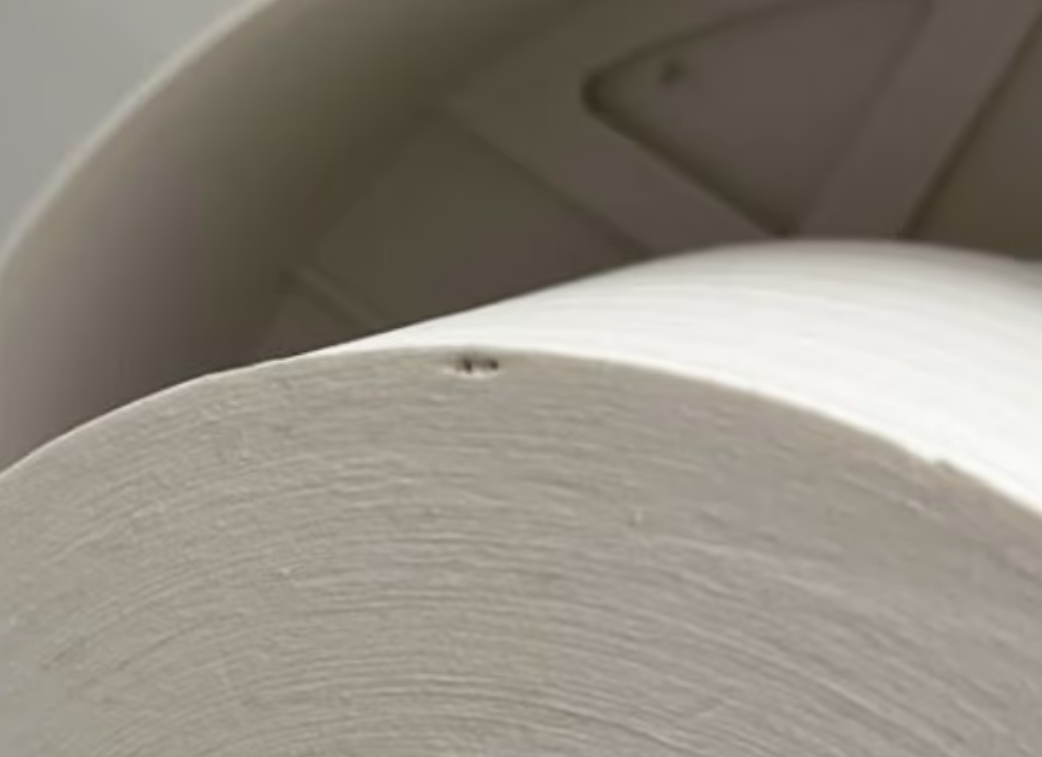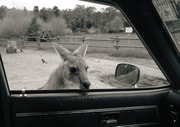
When a Sydney woman posted a warning about suspicious marks on a public toilet paper roll, her video quickly racked up 175,000 views and countless shares. But while Chloe Andrews' concern for public safety was genuine, health experts say the real worry isn't what she found—it's how quickly unverified health claims can spread online.
The discovery that sparked a social media storm
Chloe Andrews was using a public toilet at a riverside park in Sydney when she noticed tiny marks and specks on the toilet paper roll. The dispenser case fell off as she sat down, revealing what appeared to be small puncture marks with traces of blood.
Andrews believed the marks were made by drug users cleaning needles by pushing them into toilet paper rolls—a theory that's been circulating on social media for years.
Concerned about potential health risks, she reported the incident to her local council and shared a warning video that went viral almost immediately.
'I'm sure they'll take the right precautions to keep these toilets safe for the community'
'Especially mums, do not let your kids use the public toilets,' Andrews warned in her video, which resonated with parents and prompted many to reconsider their own bathroom habits.
What the experts actually say
While Andrews' concern was understandable, the Occupational Safety and Health Administration and the National Institute for Drug Abuse both said they are not aware of it being a common practice for intravenous drug users to clean needles by stabbing them into rolls of toilet paper.
A spokesperson for the Washington State Department of Health explained: 'We have never heard of this. This practice seems extremely unlikely because the tip of the needle could break off if one tried to stab it through a toilet paper roll. I'm not sure why someone would risk that if what they wanted was to use the same needle for another shot. Logically it would be much easier to wipe off the tip with some toilet paper rather than stabbing it through the roll.'
The facts about needle cleaning
Harm reduction experts explain that needles dull very quickly, and using a dull needle is not only harmful to health but also incredibly painful. Nobody would try to clean needles by sticking them into something solid.
People are much more likely to use liquid solutions like bleach to clean their needles.
Harm Reduction Services, a California-based organisation that distributes millions of sterile syringes annually, has actively debunked these claims on social media. They point out that urban legends about needles in toilet paper rolls, gas pumps, and hotel pillows serve to 'say that drug users are scary and we're allowed to treat them badly.'
Understanding the real risks
This doesn't mean public toilets are without genuine health considerations. The National Public Toilet Map, funded by the Australian Government Department of Health and Aged Care, shows locations of more than 22,000 public toilet facilities across Australia—facilities that are regularly maintained and cleaned.
South Australian health guidelines recommend that public facilities use vandal-resistant, easily cleaned materials and fittings that can withstand frequent use. Sydney's automatic public toilet facilities clean and disinfect the toilet bowl and floor automatically after each use, with clear instructions displayed in multiple formats.
Real public toilet hygiene concerns
- Standard cleanliness and maintenance issues
- Proper handwashing facilities and soap availability
- Adequate toilet paper supply and dispenser functionality
- Clear sight lines and good lighting for safety
- Regular cleaning schedules by facility managers
Practical safety tips for Australian seniors
Rather than avoiding public toilets entirely, here are evidence-based precautions that make sense:
Before entering:
- Choose well-lit, frequently maintained facilities when possible
- Check that soap and paper towels are available
- Use the National Public Toilet Map app to find clean, accessible facilities
While inside:
- Wash hands thoroughly with soap and warm water
- Use paper towels to turn off taps and open doors
- Keep personal items off the floor
For peace of mind:
- Carry alcohol-based hand sanitiser as a backup
- Keep a small pack of tissues for emergencies
- Consider getting a Master Locksmiths Access Key (MLAK) if you have mobility or continence needs—it provides 24/7 access to specially equipped public toilets
The bigger picture about health scares
The rapid spread of Andrews' video highlights how quickly health warnings can amplify online, regardless of their accuracy. Snopes notes that rumours about intravenous drug users cleaning needles in toilet paper rolls were 'based on a single, unverified Facebook post' and that 'we have not encountered any evidence to suggest that this practice is widespread.'
Did you know?
Did you know?
The National Public Toilet Map is funded by the Australian Government as part of the National Continence Program to assist the estimated 4.8 million Australians affected by continence issues. This reflects how seriously authorities take public toilet access and safety.
Social media's speed can turn individual incidents into perceived epidemics. While it's natural to want to protect ourselves and our families, it's worth checking claims against official health sources before sharing them widely.
Moving forward with confidence
Andrews' instinct to report concerning signs to her local council was exactly right. Australian health authorities have established codes of practice to ensure sufficient facilities are available for maintaining adequate standards of sanitation and personal hygiene. When something seems amiss, local councils and facility managers want to know about it.
The key is distinguishing between legitimate maintenance issues—broken dispensers, inadequate cleaning, or poor lighting—and fears based on unverified claims. Most public toilets in Australia are subject to regular health inspections and maintenance schedules.
What's your experience with public toilet safety? Have you encountered maintenance issues that councils should know about, or do you have practical tips that work well for you?
Original Article
https://www.dailymail.co.uk/femail/...tml?ns_mchannel=rss&ns_campaign=1490&ito=1490
Are IV Drug Users Cleaning Needles by Poking Toilet Paper Rolls? | Snopes.com
Cited text: This photograph and text was originally shared by Facebook user Gavin Aubert.
Excerpt: Chloe Andrews was using a public toilet at a riverside park in Sydney when she noticed tiny marks and specks on the toilet paper roll.
https://www.snopes.com/fact-check/iv-drug-users-needles-in-tproll/
Are IV Drug Users Cleaning Needles by Poking Toilet Paper Rolls? | Snopes.com
Cited text: The Occupational Safety and Health Administration and the National Institute for Drug Abuse both said they are not aware of it being a common practice...
Excerpt: the Occupational Safety and Health Administration and the National Institute for Drug Abuse both said they are not aware of it being a common practice for intravenous drug users to clean needles by stabbing them into rolls of toilet paper.
https://www.snopes.com/fact-check/iv-drug-users-needles-in-tproll/
Are IV Drug Users Cleaning Needles by Poking Toilet Paper Rolls? | Snopes.com
Cited text: A spokesperson for the Washington State Department of Health said that they were also unaware of any reports of drug users cleaning needles by stickin...
Excerpt: A spokesperson for the Washington State Department of Health explained: 'We have never heard of this.
https://www.snopes.com/fact-check/iv-drug-users-needles-in-tproll/
TikToker debunks infamous urban legend about public restrooms: 'Demonizing people for views'
Cited text: “Needles dull very quickly, and using a dull needle is not only harmful to your health, but also incredibly painful. Nobody is going to try to clean n...
Excerpt: Harm reduction experts explain that needles dull very quickly, and using a dull needle is not only harmful to health but also incredibly painful.
https://www.yahoo.com/lifestyle/tiktok-debunks-harmful-urban-legend-183701594.html
TikToker debunks infamous urban legend about public restrooms: 'Demonizing people for views'
Cited text: Nobody is going to try to clean needles by sticking them into something solid.” · They said people are much more likely to use something liquid like a...
Excerpt: People are much more likely to use liquid solutions like bleach to clean their needles.
https://www.yahoo.com/lifestyle/tiktok-debunks-harmful-urban-legend-183701594.html
TikToker debunks infamous urban legend about public restrooms: 'Demonizing people for views'
Cited text: “That’s the point of all urban legends, whether it’s needles in toilet paper rolls, gas pumps, hotel pillows … it’s to say that drug users are scary a...
Excerpt: They point out that urban legends about needles in toilet paper rolls, gas pumps, and hotel pillows serve to 'say that drug users are scary and we're allowed to treat them badly.'
https://www.yahoo.com/lifestyle/tiktok-debunks-harmful-urban-legend-183701594.html
The National Public Toilet Map | Continence Health Australia (formerly the Continence Foundation of Australia)
Cited text: The National Public Toilet Map is funded by the Australian Government Department of Health and Aged Care as part of the National Continence Program.
Excerpt: The National Public Toilet Map, funded by the Australian Government Department of Health and Aged Care, shows locations of more than 22,000 public toilet facilities across Australia
https://www.continence.org.au/national-public-toilet-map
The National Public Toilet Map | Continence Health Australia (formerly the Continence Foundation of Australia)
Cited text: The National Public Toilet Map is a free website and App that shows the location of more than 22,000 public toilet facilities across Australia.
Excerpt: The National Public Toilet Map, funded by the Australian Government Department of Health and Aged Care, shows locations of more than 22,000 public toilet facilities across Australia
https://www.continence.org.au/national-public-toilet-map
Sanitation and personal hygiene requirements for non-residential facilities | SA Health
Cited text: When providing facilities for the public it is recommended that vandal-resistant easily cleaned and maintained materials and fittings be provided whic...
Excerpt: South Australian health guidelines recommend that public facilities use vandal-resistant, easily cleaned materials and fittings that can withstand frequent use.
https://www.sahealth.sa.gov.au/wps/...e+requirements+for+non-residential+facilities
Public toilets in Sydney—City of Sydney
Cited text: These automatic public toilet facilities open 24 hours a day and are available at the following locations: Hyde Park (facilities located near Macquari...
Excerpt: Sydney's automatic public toilet facilities clean and disinfect the toilet bowl and floor automatically after each use, with clear instructions displayed in multiple formats.
https://www.cityofsydney.nsw.gov.au/public-health-safety-programs/public-toilets
The National Public Toilet Map | Continence Health Australia (formerly the Continence Foundation of Australia)
Cited text: Other features displayed on the National Public Toilet Map: ... TheMaster Locksmiths Access Key(MLAK) is a system that enables 24/7 access to public t...
Excerpt: Consider getting a Master Locksmiths Access Key (MLAK) if you have mobility or continence needs—it provides 24/7 access to specially equipped public toilets.
https://www.continence.org.au/national-public-toilet-map
Are IV Drug Users Cleaning Needles by Poking Toilet Paper Rolls? | Snopes.com
Cited text: In short, rumors about intravenous drug users cleaning their needles by stabbing them into rolls of toilet paper in public bathrooms were based on a s...
Excerpt: Snopes notes that rumours about intravenous drug users cleaning needles in toilet paper rolls were 'based on a single, unverified Facebook post' and that 'we have not encountered any evidence to suggest that this practice is widespread.'
https://www.snopes.com/fact-check/iv-drug-users-needles-in-tproll/
National Public Toilet Map—Apps on Google Play
Cited text: The National Public Toilet Map is funded by the Australian Government Department of Health as part of the National Continence Program to assist the es...
Excerpt: The National Public Toilet Map is funded by the Australian Government as part of the National Continence Program to assist the estimated 4.8 million Australians affected by continence issues.
https://play.google.com/store/apps/...toiletmap&=&hl=en_AU&=&gl=US&=&pli=1
Sanitation and personal hygiene requirements for non-residential facilities | SA Health
Cited text: The Code of Practice for the Provision of Facilities for Sanitation and Personal Hygiene (PDF 47KB) has been developed to assist the relevant authorit...
Excerpt: Australian health authorities have established codes of practice to ensure sufficient facilities are available for maintaining adequate standards of sanitation and personal hygiene.
https://www.sahealth.sa.gov.au/wps/...e+requirements+for+non-residential+facilities







